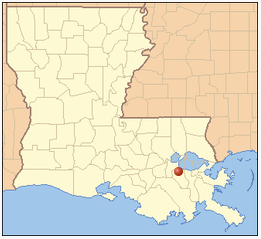| Home | Search | Emissions | Pollutants | About the Database |

Valero (26003), Norco
LDEQ Accident Report
| Accident # | 143663 |
| State Police # | 12-0668 |
| Accident Date | 2012-10-08 |
| Report Date | 2012-10-12 |
| Follow-up Date | 2012-12-05 |
| Follow-up: | Yes |
Pollutants Released
| Pollutant | Duration | Point Source | Greenhouse Gas | Criteria Pollutant | Ozone forming chemical | Amount of Release |
| Sulfur Dioxide | 12m | NIG | NO | YES | NO | 1,718.0 pounds |
Accident Classified As: Reportable Quantity
Cause of Problem: Equipment Failure
The Hydrotreater Hydrocracker (HTHC) unit had malfunctioned resulting in excess SO2 emissions at Flares 1 and 4. A feed pump motor shutdown due to an inboard bearing failure causing all four of the HTHC heaters to trip. When the HTHC heaters tripped, the LCO reactor lost its heat input to the top of the hydrotreating bed. With the loss of the heat input, the quench valve automatically began to close with the change in the bed inlet temperature causing less hydrogen to be fed into the stream creating a change in the hydrogen/oil ratio and ammonia in the vapor phase. In addition, there was tray damage in the LCO reactor causing flow maldistribution which compounded the issue. Thus, the change in composition and flow maldistribution caused increased cracking and significant temperature increase in a subsequent bed. The temperature increase in the subsequent bed activated the high rate depressurization of the HTHC unit.
Discharge Preventable - No
This incident was not reasonably preventable. There was clear cause for this release attributable to operation or maintenance or the HTHC.
Notes/Remedial Actions
Gas from the HTHC was combusted in Flare 1 and 4 and the resulting combustion byproducts rapidly dispersed. A quantity of the material was recovered through the fuel gas recovery unit on the flare system. The reportable quantity for SO2 was exceeded as a result of this incident. In addition, the max hourly permitted emissions for SO2 were exceeded at Flares 1 and 4. Operations will implement a guidance document to reduce set points by 15 degrees Fahrenheit on loss of LCO charge heater. Cracking beds operation stability will be improved by limiting the temperature delta. A high priority alarm to the DCS will be added. The logic in the DCS will be revised to eliminate the inlet temperature trips.

Connect With Us: